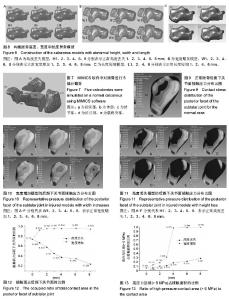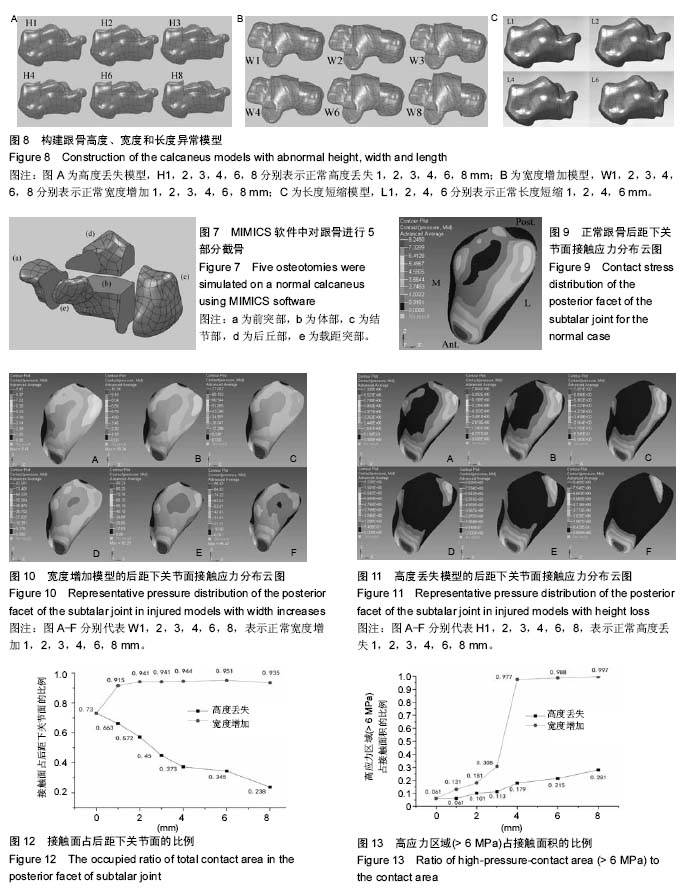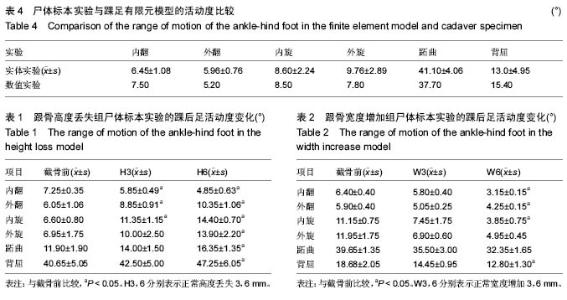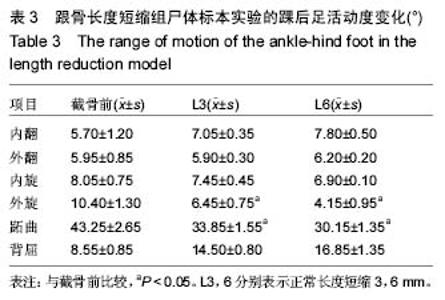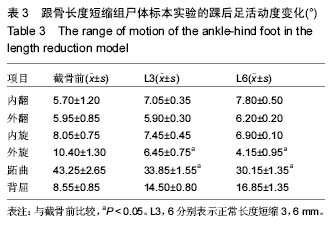| [1] Mulcahy DM, Mccormack DM, Stephens MM. Intra-articular calcaneal fractures: effect of open reduction and internal fixation on the contact characteristics of the subtalar joint. Foot Ankle Int. 1998;19(12): 842-848.
[2] Sangeorzan BJ, Ananthakrishnan D, Tencer AF. Contact characteristics of the subtalar joint after a simulated calcaneus fracture. J Orthop Trauma. 1995; 9(3): 257-258.
[3] Buckley R, Tough S, Mccormack R, et al. Operative compared with nonoperative treatment of displaced intra-articular calcaneal fractures. J Bone Joint Surg. 2002;84(10): 1733-1744.
[4] Rammelt S, Barthel S, Biewener A, et al. Calcaneus fractures. Open reduction and internal fixation. Zentralblatt Fur Chirurgie. 2003;128(6): 517-528.
[5] Anderson AE, Ellis BJ, Maas SA, et al. Effects of idealized joint geometry on finite element predictions of cartilage contact stresses in the hip. J Biomech. 2010; 43(7): 1351-1357.
[6] Sugimoto K, Takakura Y, Tohno Y, et al. Cartilage thickness of the talar dome. Arthroscopy. 2005;21(4): 401-404.
[7] Golano P, Vega J, De Leeuw PA, et al. Anatomy of the ankle ligaments: a pictorial essay. Knee Surg Sports Traumatol Arthrosc. 2010;18(5): 557-569.
[8] Imhauser CW, Siegler S, Udupa JK, et al. Subject- specific models of the hindfoot reveal a relationship between morphology and passive mechanical properties. J Biomech. 2008;41(6): 1341-1349.
[9] Funk JR, Hall GW, Crandall JR, et al. Linear and quasi-linear viscoelastic characterization of ankle ligaments. J Biomech Eng. 2000;122(1): 15-22.
[10] Siegler S, Block J, Schneck CD. The mechanical characteristics of the collateral ligaments of the human ankle joint. Foot Ankle. 1988;8(5): 234-242.
[11] Anderson AE, Ellis BJ, Maas SA, et al. Validation of finite element predictions of cartilage contact pressure in the human hip joint. J Biomech Eng. 2008;130(5): 051008.
[12] Janzen DL, Connell DG, Munk PL, et al. Intraarticular fractures of the calcaneus: value of CT findings in determining prognosis. AJR Am J Roentgenol. 1992; 158(6):1271-1274.
[13] Hetsroni I, Nyska M, Ben-Sira D, et al. Analysis of foot and ankle kinematics after operative reduction of high-grade intra-articular fractures of the calcaneus. J Trauma Acute Care Surg. 2011;70(5): 1234-1240.
[14] Basile A. Operative versus nonoperative treatment of displaced intra-articular calcaneal fractures in elderly patients. J Foot Ankle Surg. 2010;49(1): 25-32.
[15] Mitchell MJ, Mckinley JC, Robinson CM. The epidemiology of calcaneal fractures. Foot (Edinb). 2009;19(4): 197-200.
[16] Guerado E, Bertrand ML, Cano JR. Management of calcaneal fractures: what have we learnt over the years? Injury. 2012;43(10): 1640-1650.
[17] Loucks C, Buckley R. Bohler's angle: correlation with outcome in displaced intra-articular calcaneal fractures. J Orthop Trauma. 1999;13(8): 554-558.
[18] Kitaoka HB, Schaap EJ, Chao EY, et al. Displaced intra-articular fractures of the calcaneus treated non-operatively. Clinical results and analysis of motion and ground-reaction and temporal forces. J Bone Joint Surg Am. 1994;76(10): 1531-1540.
[19] Barei DP, Bellabarba C, Sangeorzan BJ, et al. Fractures of the calcaneus. Orthop Clin North Am. 2002;33(1): 263-85, x.
[20] Rammelt S, Grass R, Zawadski T, et al. Foot function after subtalar distraction bone-block arthrodesis A PROSPECTIVE STUDY. J Bone Joint Surg. 2004; 86(5): 659-668. |
